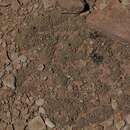en
names in breadcrumbs


Neohenricia is a genus of flowering plants in the family Aizoaceae, native to South Africa.[2] Low-lying succulents, they are found in places that can collect a little water, such as crevices and pans, on sandstone or dolorite, in areas that get at least 200 mm of rainfall annually.[3]
The genus was named after Swiss-born South African plant physiologist Marguerite Gertrud Anna Henrici.[4]
Currently accepted species include:[2]
{{cite book}}: CS1 maint: others (link) Neohenricia is a genus of flowering plants in the family Aizoaceae, native to South Africa. Low-lying succulents, they are found in places that can collect a little water, such as crevices and pans, on sandstone or dolorite, in areas that get at least 200 mm of rainfall annually.
The genus was named after Swiss-born South African plant physiologist Marguerite Gertrud Anna Henrici.